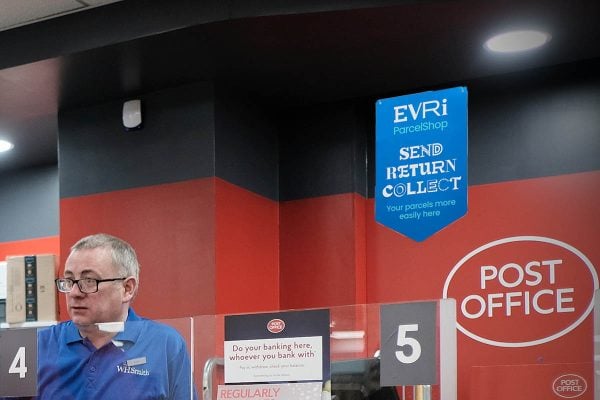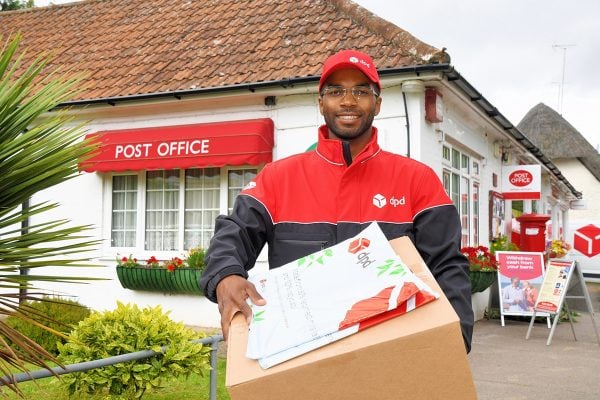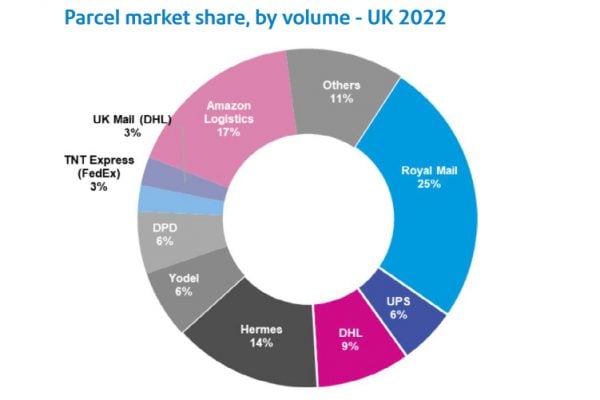DPD have placed an order with vehicle manufacturer MAN Truck & Bus UK for 100 eTGE electric vans. The 3.5t van is the workhorse of the parcel delivery industry, but until now, electric versions have not been widely available in the UK. DPD will take the first 100 eTGE’s when they roll off the production line from June 2020.
MAN’s eTGE is tailored to meet the requirements of inner-city delivery traffic with a load capacity of 10.7m3 and a range of 65-70 miles. The 36kW lithium ion battery can be fully charged at a charge point in just over five hours or rapid charged to 80% in 45 minutes.
The MAN electric vans order is part of DPD’s strategy to be the most responsible and sustainable city centre delivery company and the leader in electric vehicles in the UK. In October 2018, DPD opened the UK’s first all-electric parcel depot in Westminster and in November last year launched a unique, purpose-built, e-cargo bike called the EAV P1.
In January, DPD confirmed it was taking delivery of 300 new electric Nissan e-NV200 electric vans by May 2020, in what is believed to be the largest single UK commercial EV van order to date. The Nissan and MAN orders will give DPD the largest EV parcel delivery fleet in the UK, with DPD aiming for 10% of its van fleet to be electric in each of its 68 UK depots by the end of this year.
“We’re building the largest all-electric delivery fleet in the UK, in double-quick time. The 3.5t van is absolutely core to our delivery and collection fleet strategy, so this is a big deal for us. It gives us huge efficiencies on the road in terms of route densities, but we’ve had to wait a long time for the first electric right-hand drive 3.5t vans. We’re really pleased to be partnering with MAN Truck & Bus on what is another UK EV first, and we are hugely grateful for their support.
We are urging other manufacturers to bring forward right-hand drive electrics as we can take far more. It isn’t just us demanding them, our retail customers have responded very positively to our new EV fleet and they want to be telling their customers about their green deliveries too. We are designing new ways of working to incorporate these vehicles into our operation, so they are transforming our business as well as contributing to cleaner air and less congestion.”
– Dwain McDonald, DPD, CEO
Everyone is talking electric vehicles, and yet DPD are one of the few able to forge ahead with what will be the largest all-electric delivery fleet in the UK, but what about us consumers?
I know a few people with electric cars and the reality is they are lovely to drive but a pain in the neck if you actually want to drive them very far. It’s fine if you never go anywhere or commute locally to school, work, school and home and only travel about 30 miles a day – your car will probably survive a week or more between charges. For those who travel long distance it’s going to be a nightmare, for instance a self driving Nissan Leaf recently completed a 230 one way trip from Bedfordshire to Sunderland… it had to stop FOUR times to be charged on the way. That’s a trip I’d normally do in one hit and a tank of fuel would get me there and back with another 100 miles plus still in the tank.
Charging times of 5 hours just aren’t going to cut it for most people and neither are splash and dash 45 minute top ups, especially not if you need four of them on a single trip. Sure the self driving car probably had a ton of electrics running not normally found in a car, but even if it was one 45 minute stop that’s extending journey times. It can only get worse with as electric cars get older and the batteries start to die – (think of the performance of an old iPhone that’ll die half way through the day compared to a brand new one).
Then again, where are we all going to charge our cars. Anyone who’s driven down, much less tried to park, in a terraced street will know the impossibility of trying to park in ‘Your space’ outside your house and that’s without the trip hazard of running a cable to your car to charge it. Last year I went to Internet Retailing Expo at the NEC and out of their 16,500 car parking spaces there was not a single electric charging point. Things have improved this year, they’ve installed a massive 22 charging points, Two in North Car Park 2, Six in East Car Park 1, and Six in South 7. Oh and they are slow charging points and account for just 0.13% of the available parking.
The reality is that electric cars are fantastic if you never drive anywhere and have a driveway or place at work where you can charge your vehicle, but for anyone that uses them in anger they’re currently a nuisance compared with petrol/diesel and quite how the government intends to reach their 2032 target for the entire country to use them seems unattainable on current form. That just makes DPD’s fleet even more impressive – they’re having to build the charging infrastructure themselves and figure out delivery routes to ensure that electric vans won’t run out of juice.
If you have an electric car and will be attending Internet Retailing Expo, you’ll find it advisable to pre-book a charging point which will cost you £40.00 for the two days of the show. Mere mortals with normal petrol or diesel cars can pre-book parking for the same two day show for just £24.00.











8 Responses
Considering how much floor-pan space those vans appear to have, I’m concerned that they can only achieve 65-70 miles, probably 50 miles in the real-world. But I’m guessing DPD have looked at their data and noted they only need that amount as it’ll be mostly start-stop operation. But it’s a good step in the right direction and DPD are probably getting a good per-van rate from MAN.
Surely stop start driving in the case of deliveries will use far more power than a set of 5 to 10 mile drives. Whether electric or diesel… The vehicle uses more power when starting from stationary. So is their 65 to 70 based on general driving or courier driving?
What happens if they run out? Late parcels, van swaps? I forsee some issues, which we will of course be kept in the dark about why the van manufactures give sweetners to keep it quiet. Fact of life
The German Post/DHL uses EV for delivery for quite some time now (they even bought the maker) and yes the range is quite limited to somewhere below 80 miles
less when its cold , the start stop driving is less of a problem because the recuperation recovers some of the energy, serach for post and streetscooter
Not sure why the range on these van is so low, Tesla can hit almost 400 miles on their Model S, 300+ miles on their Model 3 and the new Renault Zoe can hit over 200 miles, all of the above are much more considerable than 60-70 mile range? Maybe it’s the battery technology/capacity or ergonomics? But then again the Tesla truck is meant to do a huge amount of miles too?
Don’t forget most of the delivery companies don’t have local depots any more they have moved to regional depots so for example my local DPD depot is 30 mins away from me, a lot further for some of the more remote areas near me so they have to add that driving time onto their delivery drop off times as well. So they aren’t really practical yet unfortunately, outside a city.